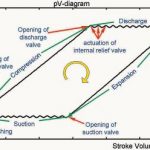Merck is more than a mere pharmaceutical company. With more than 34,000 employees worldwide, Merck is also busy in the chemical sector and supplies – among others – customers from the electronic industry. Merck is undoubtedly the world market leader when it comes to liquid crystals for flat screens of large televisions. For this invention a group of Merck researchers was honoured with the “Deutscher Zukunftspreis”, an award presented by the German President for future-minded projects. The production of these liquid crystals now takes place in a new multi-purpose plant at the Darmstadt location, in which Merck invested more than 125 million euros.
The new plant was designed to optimise production and distribution processes, and provides a primary material flow from top to bottom. Furthermore, sufficient space reserves are available for future plant expansions. However, the process control systems, tailor-made for the requirements of this multi-use plant, are the centrepiece of the plant design innovations. Detailed engineering and component expertise were required to define the plant process control standards.
Mobile weighing solutions
Process control begins with the instruments installed in the field that measure and control the various process parameters. Weight is one of these variables for the production process. With more than 130 weight control points distributed throughout the production facility, cost optimi-sation drove the decision for mobile weighing solutions. Additional requirements on the weighing technology included ease of data integration into the process control system, as well as complete protection for use in hazardous areas (Ex approval Ex II 2G EEx ib IIC T4). The facility layout, special routers and large physical distances were behind another requirement for data transfer: fibre optic cables.
The appropriate solution to satisfy all these requirements is not available off-the-shelf. However, Mettler Toledo and the Merck project team came up with a solution that leaves nothing to be desired: weighing flexibility, environmental protection, data integration and security. The plant was equipped with approximately 130 ports for connecting the Mettler Toledo mobile and Ex-approved scales. The weighing technology consisted of mobile pallet scales and pallet truck scales. Operating flexibility for the mobile scales demanded connecting cables at least 6 meters long, without any negative impact on the mechanical design in an environment resistant to organic solvents. Mettler Toledo’s design entirely met these requirements.
Interfacing to Profibus
Weighing data is sent to a converter via a fibre optic cable. The converter transforms the fibre optic signals into a Profibus protocol and sends them onwards to the process control system. The fibre optic technology was implemented by ASC project leader Klaus Müller and his colleague Christian Schwarz. The implementation of 130 interfaces provided a considerable cost reduction because the scales are only used occasionally. In other words, not all the scales are concurrently in use. However, the process control system treats all interfaces as slaves and monitors them continuously – whether or not a scale is actually being used. However, neither connection state (with or without connected scale) is allowed to cause an unintended error message. The loss of a Profibus slave could automatically generate an error message of this kind. Before defining the interfaces, Merck had a special interest in the system’s suitability for industrial use.
Weighing functionality
Simple and trouble-free monitoring of the weighing procedure is possible because data transmission is designed to allow the controller online access to the scales. Every weigh station is equipped with a workstation, which is connected to the process control and which visualises the production process as a whole. Tare, zero and “delete tare” are all required functions for the connected scales.
Plug-and-socket connection
The Merck and Mettler Toledo project teams worked out a solution in order to meet the production requirements of a plug-and-socket-connection. Connecting and disconnecting the weighing cables was not supposed to interrupt the operational readiness for the process control system. Furthermore, the plugs had to be designed to connect fibre optic cables, the use of which contributed to space savings for grommets and cable funnels, while enabling data transmission over large distances throughout the facility – all without compromising use in hazardous areas. For data acquisition associated strictly with weighing, more than 20 km of fibre optic cable was laid.
Thanks to continuous cooperation between the Mettler Toledo and Merck teams, the workplace scale systems were optimised both technically and financially.
cpp 440
Share:









